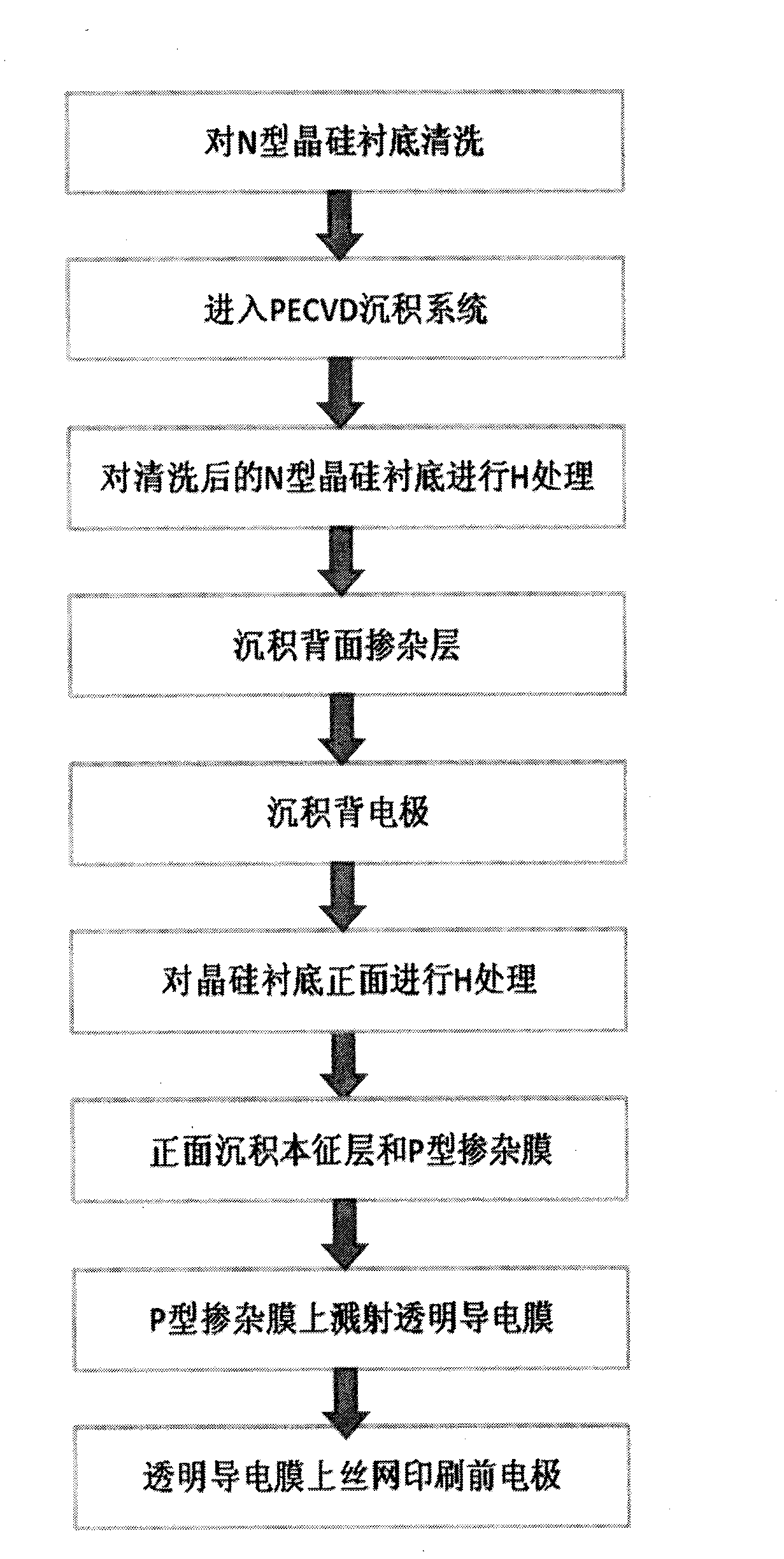Interface treatment technology for hetero junction solar cell
A solar cell and silicon heterojunction technology, which is applied in the field of preparation of heterojunction solar cells, can solve the problems of effective antireflection and surface passivation of difficult-to-high-efficiency cells, difficult to control the thickness of the oxide layer, and difficult industrialization process, etc. Achieve the effect of improving the performance of the heterojunction interface, improving the conversion efficiency, and strong operability
- Summary
- Abstract
- Description
- Claims
- Application Information
AI Technical Summary
Problems solved by technology
Method used
Image
Examples
Embodiment Construction
[0038] In order to make the technical scheme and advantages of the present invention clearer, the invention is further described in detail in conjunction with specific examples:
[0039] 1) An N-type monocrystalline silicon wafer with a thickness of 200 μm and a resistivity of 5 Ωcm is used as a substrate, and the surface is routinely cleaned.
[0040] 2) Send the cleaned N-type crystalline silicon substrate into the PECVD system, and make the reaction gas H 2 Ionization produces H;
[0041] 3) Treat the silicon surface with H at low temperature (<250°C) for 40s;
[0042] 4) Deposit a layer of heavily doped a-Si with a thickness of 20nm: a passivation layer made of H on the processed N-type single crystal silicon wafer substrate;
[0043] 5) Depositing a ZnO:B conductive film on the surface of the passivation layer by MOCVD method as the back electrode;
[0044] 6) As described in 2) and 3), carry out H treatment to the front side of the N-type monocrystalline silicon wafer...
PUM
| Property | Measurement | Unit |
|---|---|---|
| thickness | aaaaa | aaaaa |
| thickness | aaaaa | aaaaa |
Abstract
Description
Claims
Application Information
 Login to View More
Login to View More - R&D
- Intellectual Property
- Life Sciences
- Materials
- Tech Scout
- Unparalleled Data Quality
- Higher Quality Content
- 60% Fewer Hallucinations
Browse by: Latest US Patents, China's latest patents, Technical Efficacy Thesaurus, Application Domain, Technology Topic, Popular Technical Reports.
© 2025 PatSnap. All rights reserved.Legal|Privacy policy|Modern Slavery Act Transparency Statement|Sitemap|About US| Contact US: help@patsnap.com

